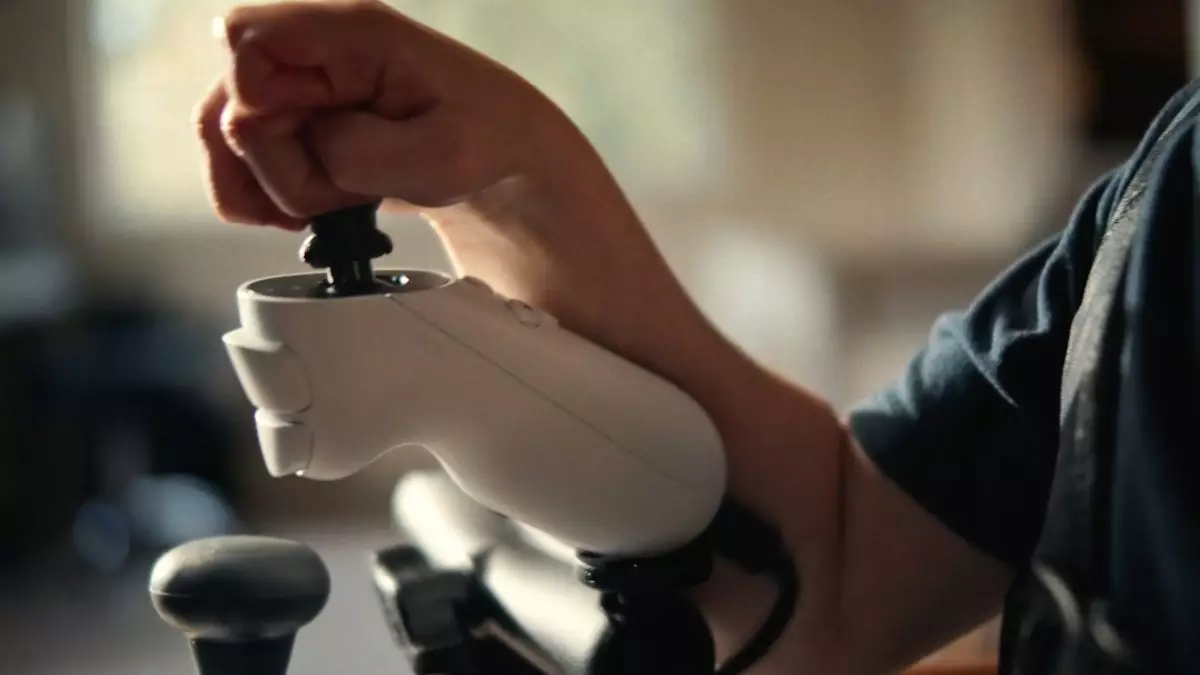The gaming industry has long been associated with an elite class of consumers, where high-quality hardware and expensive titles often dictate who gets to play and who gets left behind. This stereotype is shifting thanks to initiatives like Microsoft’s Adaptive Joystick, which aims to make gaming more inclusive for individuals with limited mobility. Recognizing that gaming should be a universal experience, Microsoft is revolutionizing the notion of accessibility in an industry that frequently overlooks it.
The recent launch of the Xbox Adaptive Joystick at the Microsoft Ability Summit highlights the company’s dedication to this cause. Priced at just $30, it not only matches the affordability of many standard controllers but also addresses needs often neglected by traditional gaming devices. The joystick offers an innovative solution by being manageable with one hand or allowing for alternate configurations that let players utilize different body parts for interaction. Such adaptability is revolutionary, signaling a paradigm shift that could make gaming a viable pastime for many who may have felt excluded due to their physical limitations.
Functionality Meets Personalization
At its core, the Adaptive Joystick is more than just a tool designed to facilitate gameplay; it’s engineered for personalization and versatility. The option to swap out joystick toppers to fit individual comfort needs is a particularly intriguing feature. However, the process of obtaining custom toppers could be seen as a double-edged sword. While this feature allows for a personalized touch, it also places a cumbersome burden on consumers who may not have easy access to 3D printing facilities. This aspect highlights the gap between the innovative design of the product and the practical implications for those who want to utilize it fully.
Furthermore, the reliance on the Xbox Accessories app for remapping buttons and managing profiles raises concerns about long-term usability. Should official support for the app wane, users risk being left with a brilliant piece of hardware that could potentially lose its functionality. It is vital for Microsoft, as they pave the road towards inclusivity, to address these longevity concerns. An inclusive gaming future must ensure that users feel secure not only in their current tools but also in their ongoing ability to utilize them effectively.
The Promise of Accessibility
Despite these hurdles, Microsoft’s commitment to fostering an accessible gaming environment deserves recognition. Their long-standing pledge to create products that consider the diversity of user needs is commendable. The company has highlighted their 30-year journey toward making technology accessible to all, exemplifying a dedication that goes beyond this latest product. Still, it is essential to approach such commitments with cautious optimism. The journey has not always been smooth; previous projects have faced challenges, including funding cuts that hindered the development of the Adaptive Controller.
Thus, while the Adaptive Joystick represents a step forward, it must be seen in context. The real test lies in how Microsoft exemplifies its promises through continued support and commitment to further innovation. To truly encapsulate the spirit of inclusivity, future iterations of their adaptive products must not just keep pace with current needs but anticipate and adapt to a broad array of diverse user experiences.
A Balanced Perspective
The broader conversation around gaming technology must also consider the implications of such innovations. Microsoft’s foray into the realm of adaptive gaming equipment presents an exciting opportunity to integrate technology with user-centered design. It offers a lifeline to many who were once marginalized by high costs or inaccessible hardware. Nonetheless, the conversation cannot solely focus on technological advancements; it has to encompass the emotional and social ramifications of including previously marginalized gamers.
In an industry that thrives on community, the Adaptive Joystick showcases the potential for technology to foster connections and create inclusive spaces for everyone, regardless of their personal circumstances. Such developments compel us to re-examine what it truly means to play. As the gaming landscape evolves, it is our responsibility to champion brands that prioritize accessibility while ensuring they remain accountable to the communities they serve. The future of gaming belongs to everyone, and initiatives like Microsoft’s Adaptive Joystick pave the way for that inclusive reality.

